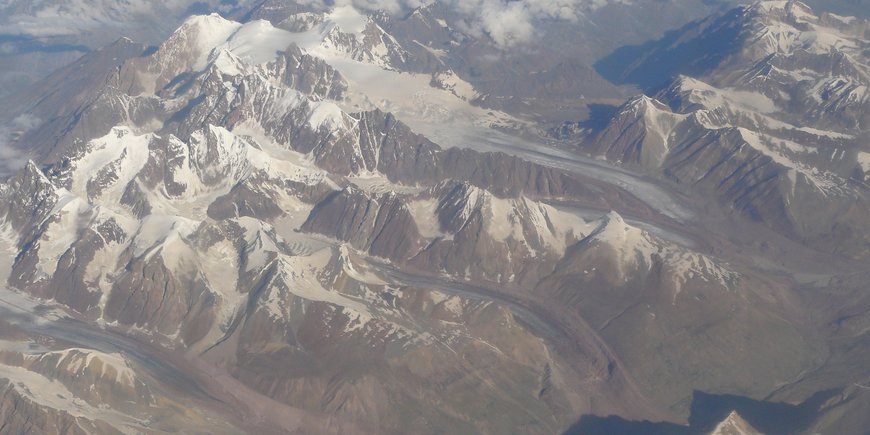05.10.2016: The Earth’s history is preserved in tree-rings, sediments or layers of ice, to name but a few. How much sediment is accumulated over centuries, millennia or even millions of years depends on the rates with which mountains erode. The more precise the estimate of erosion rates, the better one can understand the geological past. An international team of scientists including Dirk Scherler from GFZ’s section Earth Surface Geochemistry published a study in Science Advances that addresses some problems in estimating erosion rates.
Two main sources of error emerged in the meta-analysis. First, erosion rates of the more recent past are systematically overestimated. Second, there is a clear distinction between landscapes formed by glaciers and landscapes formed by rivers.
The first error stems from the nature of erosion which does not occur steadily but in so-called pulses with periods of very low erosion in between. In the long term, over millennia, pulses and pauses combine to yield an average erosion rate. On shorter timescales, however, erosion pulses are dominating the picture, leading to the overestimating of erosion rates. This holds true especially for glacial landscapes with high erosion rates. Because the Last Glacial Maximum was reached only 20,000 years ago – geologically speaking, a short time – many measurements of erosion rates in glacial landscapes are most probably systematically overestimated compared to the long-term average.








![[Translate to English:] Torsten Sachs in front of a climate station on a field](/fileadmin/_processed_/3/9/csm__TorstenSachs_bearbeitet_GS_4a1365ef84.jpeg)

![[Translate to English:] left image flood at the Ahrtal: image from above, several houses are flooded; left image:: Heidi Kreibich;](/fileadmin/_processed_/4/4/csm_Bild2_9af0130e9f.png)



![[Translate to English:] Start der Vega Rakete](/fileadmin/_processed_/6/4/csm_20231201-kachel_Vega-VV23-launch_ESA-CNES-Arianespace_706716b68c.jpeg)









![[Translate to English:] Poster exhibition at the Brandenburg Hydrogen Day at the GFZ, some participants in the foreground](/fileadmin/_processed_/6/5/csm_Erster_Brandenburgischer_Wasserstofftag_GFZ_402fcec95e.jpeg)
![[Translate to English:] Group picture of the participants](/fileadmin/_processed_/9/4/csm_20231108_CAWa-Workshop-Tashkent_Gruppenbild_99ea779d8a.jpeg)

![[Translate to English:] [Translate to English:] Hörsaal](/fileadmin/_processed_/e/6/csm_H%C3%B6rsal_e21ac645fb.jpeg)


![[Translate to English:] The Delegations in the Historic Library on the Telegrafenberg. In the back there are from left to right, the Dutch Ambassador for Germany, Ronald van Roeden, the Dutch Minister for Education, Culture and Science, Robbert Dijkgraaf and the scientific director of the GFZ, Susanne Buiter.](/fileadmin/_processed_/d/b/csm_Kachel-2_9eba4b4212.jpeg)

